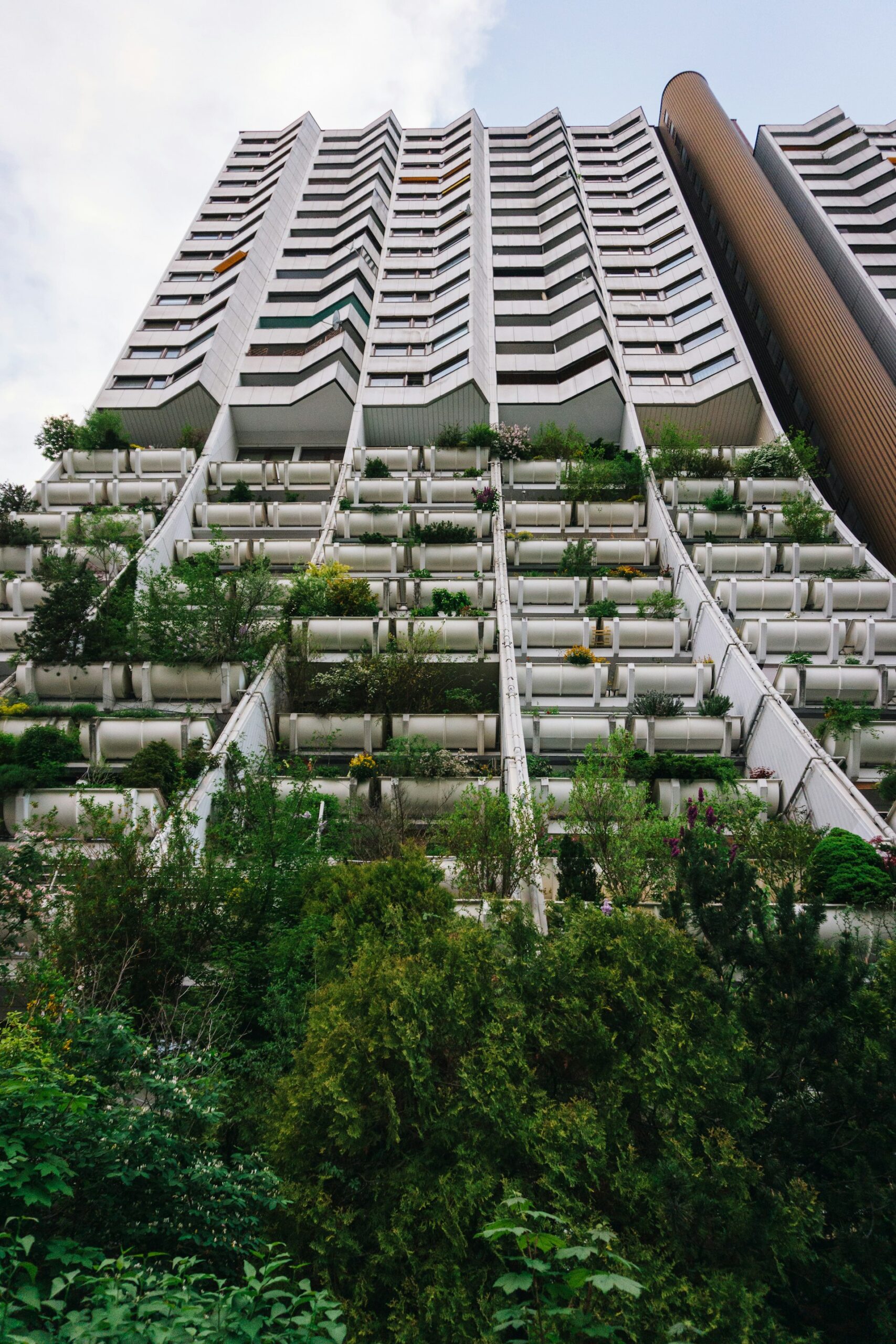Unlocking Value: How Sustainable Architecture Is Transforming Modern Real Estate


Photo by Nick Night on Unsplash
Introduction: The New Standard in Real Estate
Sustainable architecture is rapidly redefining the expectations and value propositions of modern real estate. Driven by environmental urgency, advancing technologies, and shifting consumer preferences, today’s buildings are increasingly designed with resource efficiency, occupant health, and long-term resilience in mind. For buyers, investors, and developers, understanding the principles and benefits of sustainable architecture is essential for maximizing both impact and return.
Core Principles of Sustainable Architecture
At its heart, sustainable architecture aims to minimize the environmental footprint of buildings, enhance occupant wellbeing, and support the surrounding community. Core practices include:
- Efficient use of materials: Prioritizing renewable, recycled, or locally sourced materials to reduce embodied carbon.
- Energy efficiency: Incorporating advanced insulation, high-performance windows, and passive solar design to lower energy demand.
- Water conservation: Utilizing low-flow fixtures, rainwater harvesting, and greywater systems.
- Indoor environmental quality: Maximizing daylight, natural ventilation, and non-toxic finishes for occupant health.
- Integrating with nature: Designing green roofs, vertical gardens, and site-sensitive landscaping to support biodiversity and climate adaptation.
Leading Trends in Sustainable Real Estate
Recent years have seen rapid innovation in sustainable building practices. Some of the most influential trends include:

Photo by Harm van de Ven on Unsplash
Smart Buildings: Modern sustainable properties increasingly use digital systems to monitor and optimize energy, water, and air quality in real-time. For example, buildings with occupancy sensors adjust lighting and climate control automatically, reducing waste and utility costs. Leak detection systems help prevent water loss and damage, further improving operational sustainability [4] .
Net-Zero and Positive Energy Design: Net-zero buildings produce as much energy as they consume, often through a combination of high-efficiency envelopes and onsite solar panels. Positive energy buildings go a step further, generating more energy than they use. Modular construction methods, which allow for more precise material use and less waste, are increasingly paired with these designs [4] .
Biophilic and Green Integration: Incorporating plants and natural systems into urban architecture not only improves aesthetic value but also enhances air quality, reduces heat, and supports mental wellbeing. Iconic projects like the Vertical Forest in Milan and ParkRoyal on Pickering in Singapore showcase how vertical gardens and green terraces can be integrated even in dense urban settings [1] [2] .
Real-World Examples and Case Studies
Several groundbreaking projects demonstrate the viability and impact of sustainable architecture:
Bullitt Center (Seattle, WA): Known as one of the greenest commercial buildings globally, the Bullitt Center achieves net-zero energy, water, and carbon. It uses composting toilets, toxin-free materials, and windows that provide extensive daylighting. These features showcase that high performance and sustainability can coexist with modern functionality [1] .
Vertical Forest (Milan, Italy): This residential complex incorporates a plant-based facade, creating a microclimate that filters sunlight and improves air quality while enhancing resident wellbeing. It is a leading example of how sustainability can be visually striking and highly functional [1] [2] .
ParkRoyal on Pickering (Singapore): This hotel features plant-covered balconies and sky gardens, doubling the greenery of its footprint and integrating sensor-driven energy and water systems. Such projects show how hospitality and sustainability can be seamlessly combined [2] .
Southampton Eco-Home (USA): A modern, three-story residence in Southampton uses solar panels, triple-pane windows, and smart home devices to minimize environmental impact while maximizing comfort and luxury. This project demonstrates that sustainability can align with high-end, modern lifestyles [3] .
Implementing Sustainable Architecture in Your Real Estate Project
Integrating sustainable architecture into new developments or renovations involves several key steps:
- Assess Your Site: Begin by evaluating the site’s climate, orientation, and ecosystem. Use this information to inform passive solar design, natural ventilation, and integration with local habitats.
- Set Clear Sustainability Goals: Determine your targets for energy use, water conservation, indoor environmental quality, and material selection. Seek third-party certifications such as LEED, WELL, or Passive House if appropriate. Official resources and requirements can typically be found by searching the U.S. Green Building Council (for LEED) or the International WELL Building Institute (for WELL certification).
- Choose the Right Team: Engage architects, engineers, and contractors with proven experience in green building. Review portfolios and request case studies of prior sustainable projects. Many local chapters of the American Institute of Architects (AIA) have directories of sustainability-focused professionals.
- Prioritize High-Impact Strategies: Focus first on design decisions that yield the greatest returns-such as high-performance insulation, solar orientation, and water-efficient landscaping. Integrate smart technologies to monitor and control building systems for ongoing performance optimization [4] .
- Source Materials Responsibly: Whenever possible, use recycled, rapidly renewable, or locally produced materials. Verify certifications from established organizations such as the Forest Stewardship Council (FSC) for wood products.
- Plan for Resilience: Consider climate risks, such as flooding or heatwaves, and design with adaptability in mind. Incorporate backup energy systems and durable, low-maintenance finishes.
Overcoming Challenges and Exploring Alternatives
While sustainable architecture offers substantial benefits, there are challenges to consider. Upfront costs for green technologies or certifications can be higher, though these are often offset by long-term savings in energy, water, and maintenance. Regulatory environments may vary, so it is important to consult local building departments early in the design process.
If budget or site conditions present obstacles, consider phased implementation-prioritizing upgrades that provide the fastest payback, such as LED lighting and insulation. Alternative financing, such as green loans or utility rebates, may be available through your local bank or utility provider. Contact these organizations directly to learn about current incentives and eligibility.
For existing buildings, retrofitting with energy-efficient windows, solar panels, and smart thermostats can yield significant improvements without requiring a full rebuild. Engage with local sustainability organizations or search for “green building retrofit programs” in your city or state for guidance and potential funding.
Maximizing Value: The Benefits of Sustainable Architecture
Adopting sustainable architecture in real estate delivers measurable advantages:
- Lower operating costs: Reduced energy and water bills through efficient systems.
- Higher property value: Green-certified buildings often command premium prices and attract eco-conscious buyers and tenants.
- Enhanced occupant health: Improved air quality, natural lighting, and non-toxic materials support wellbeing and productivity.
- Regulatory compliance: Meeting or exceeding local codes and future-proofing against evolving standards.
- Positive environmental impact: Reduced carbon emissions, water use, and waste generation.
For sellers and developers, these benefits translate to stronger market differentiation and long-term asset resilience. For buyers and occupants, they mean healthier, more comfortable spaces and potential cost savings over time.
Getting Started: Pathways and Next Steps
If you are interested in pursuing sustainable architecture for your next real estate project, consider these steps:
- Research local green building professionals via the American Institute of Architects (AIA) directory or by searching for LEED-accredited firms in your region.
- Contact your city or state’s building department to learn about current sustainability codes, zoning incentives, and permitting requirements.
- Explore financing options-many banks and credit unions now offer green home loans, and some utility companies have rebate programs for energy-efficient upgrades. Contact your local bank or utility provider directly for details.
- Stay informed about trends and opportunities by following reputable industry sources such as the U.S. Green Building Council, the International Living Future Institute, or leading architectural firms specializing in sustainability.
- If unsure where to begin, consult with a sustainability consultant or green building advisor. They can help you set goals, evaluate feasibility, and coordinate implementation with your design and construction team.
References
- [1] Hutter Architects (2023). Sustainable Architecture Examples: Top 10 Innovative Buildings Worldwide.
- [2] Parametric Architecture (2025). Top 10 Examples of Most Sustainable Architecture in 2025.
- [3] BuildLabs (2024). 7 Stunning Examples of Sustainable and Eco-Friendly Homes Around the World.
- [4] BrightBuilt Home (2024). The Latest Trends in Sustainable Architecture.






